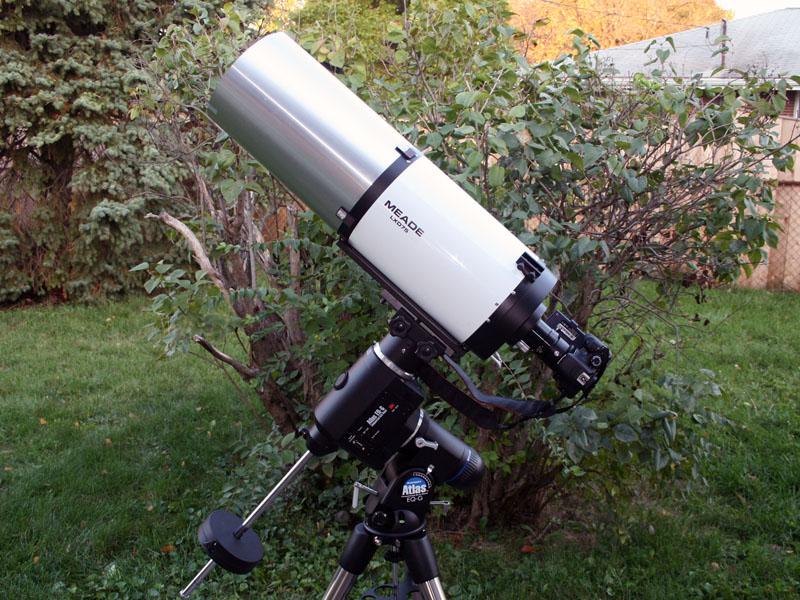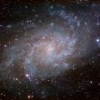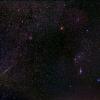
Guiding: OAG vs Guide Scope
#26

Posted 29 December 2012 - 01:14 PM
With a long focal length and small field that's typical of most oag setups, you need relatively long exposures to get a star, bright stars are rare in the oag field. If you do 30 second exposures on the guide camera, finding a star will never be a problem. It also means, corrections can only happen once every 30 seconds, a big problem if your mount has an 8 second cycle on the PE that you are trying to correct for.
So, if you are trying to correct a low end mount, with a first order PE cycle on the range of 8 to 12 seconds, you need to get corrections running at roughly 1 second intervals. This is a challenge for many oag setups. On the other hand, if you are correcting a mount that has 4 or 5 arcseconds of PE, over 8 or 10 minute timescales, with no noticeable period on shorter timeframes, using an oag with 15 second exposures is going to provide plenty of opportunity for corrections at the rate needed.
#27

Posted 29 December 2012 - 04:28 PM
#28

Posted 29 December 2012 - 06:23 PM
#30

Posted 31 December 2012 - 11:31 AM
Finding a guide star took some time because of the sensitivity of the QHY5 I think, so I may consider an upgrade to a lodestar or something.
I was able to take a single shot of M42 for 15 minutes and the stars looked great -- even with my fast and sloppy polar alignment. I probably could have taken a lot longer exposure but it was cold and the moon was too bright to make any resulting pics worth it. Plus, I'm not so sure long exposures of that magnitude are really necessary for a DSLR. With my previous setup using the QHY5 and a Celestron 80mm piggyback I was lucky to get 3 minutes before flexure kicked in causing my target to slowly shift out of the frame over the course of the night.
#31

Posted 31 December 2012 - 11:39 AM
#32

Posted 31 December 2012 - 12:18 PM
I have Hutech OAG-5 with Lodestar and they work great with my C-8 EdgeHD. I have an optional Helical focuser at the guide port and it's very handy to precisely focus a guide star. I parfocal both Lodestar and imaging camera during the day. I aim for a distant object like street light about a mile away. Once parfocaled during the day, it should be very close under the dark sky. You might have to tweak a bit.
I will never go back to guide scope. I typically have to throw out up to 50% of the subs with guide scope. With OAG, I usually never throw out a single sub unless an airplane flew by. I can easily guide up to 30 minutes with OAG.
See my setup and images in "Peter's Galleries" in my signature.
Peter
#33

Posted 31 December 2012 - 03:02 PM
Wayne - just curious what that flexure was from, were you able to isolate the source? Glad to hear the OAG solution worked for you
How long of guide exposures were you using? I'd be interested to see a 15 minute sub from a DSLR - I don't visit that forum.
Hi there,
No I never isolated the problem. I tried tightening everything down as much as possible but no matter what I did, the image would eventually slip out of the frame over the course of the night even when I took short enough exposures to keep the stars tight. (Typically 60 to 120 seconds) It was so frustrating.
Given the moonlight and cold last night I didn't get to perform a similar test but I am going to assume that since the stars stayed round in 15 minutes then the image isn't going to move on me once I start taking lots of subs - fingers crossed.
The picture I took last night was hot with light pollution but the stars looked good. I'll post the image if I get a chance to boot up the laptop later.
#34

Posted 31 December 2012 - 03:04 PM
Wayne,
I have Hutech OAG-5 with Lodestar and they work great with my C-8 EdgeHD. ...
Peter
Hi Peter,
So what is your process for finding the guide star? Do you locate your target then rotate the OAG around until you see something on the display? I notice that there are some additional adjustment screws on the OAG but I'm not sure what they may be used for and was wondering if you have to use them at all in your experience?
#35

Posted 31 December 2012 - 03:28 PM
I have been very fortunate because I have not had to hunt for guide stars after framing an DSO with imager camera. Thanks to Lodestar's high sensitivity, at least one guide star is always in Lodestar's FOV. I highly recommend to get a Lodestar. My scope is C-8 EdgeHD at 2000mm focal length.
I orient my OAG so the guide port is parallel to Dec axis. I first focus on a bright star with imager camera and Bahtinov mask, then move the mount's Dec axis until the same star is in OAG's guide port, focus the star using Helical focuser. The sharper the focus of guide star, the brighter the stars are and the easier to find guide stars. If you are imaging with C-14 (from your signature) which is a very long focal length scope, you might not have as good luck as my C-8 due to much narrower FOV from C-14.
First loosen the two screws at the top of OAG, move around the OAG guide port until you find a guide star and tighten the screws. If you can't find a guide star, then slowly rotate the OAG at the scope side by loosening three screws until a guide star is found and tighten the three screws.
Peter
#36

Posted 31 December 2012 - 03:51 PM
No I never isolated the problem. I tried tightening everything down as much as possible but no matter what I did, the image would eventually slip out of the frame over the course of the night even when I took short enough exposures to keep the stars tight. (Typically 60 to 120 seconds) It was so frustrating.
60 to 120 seconds guiding exposures?!?!?!? No wonder the image drifted off. Typical guide exposures should be less than 5 seconds.
It's usually next to impossible to find the source of the flex between guide and main scopes. If you are trying to guide a C-14 EdgeHD even with mirror locks engaged using guide scope, you will likely to have differential flexure not because of mirror might flop, but the focal length is very long and OAG is usually the the best method.
Peter
#37

Posted 31 December 2012 - 04:24 PM
60 to 120 seconds guiding exposures?!?!?!?
Oh sorry I meant my images were 60 to 120 second exposures. The guide camera was set to 2 or 3 second exposures. : )
#38

Posted 31 December 2012 - 04:29 PM
Peter
#39

Posted 31 December 2012 - 07:17 PM
There is a cool feature in some planetarium software called Field of View Indicator or "FOVI" which allows you to plan ahead for suitable guide stars when using OAG. Take a look at the old CN thread at:
The Sky FOVI
Do a search for "FOVI" in Google and you will find useful information.
Peter
#40

Posted 07 January 2013 - 01:00 PM
I had switched from piggyback to OAG just to help reduce weight. A side affect was apparently better guiding even though I didn't think I had flexure.
I usually average about 30 10 minutes frames in a night. With the guidescope, my stacking software threw out 5 or 6 frames...first time with the OAG it threw out 1 so I was happy.
I have the SBIG STi and like it....I bought it withe the SBIG OAG for the 8300 cameras. It's a nice package but a much better deal if you buy the bundle with the camera.
#41

Posted 07 January 2013 - 03:13 PM
I have so many problems with it, i give up. First, my guide camera is a Meade dsi pro1 and it's too heavy to lay on top of the oag without getting loose and rotate freely...in addition to other problems reported by other users of this OAG.
So here, i say there might be some good OAG, but you have to put some $ in it.
#42

Posted 08 January 2013 - 01:47 AM





















